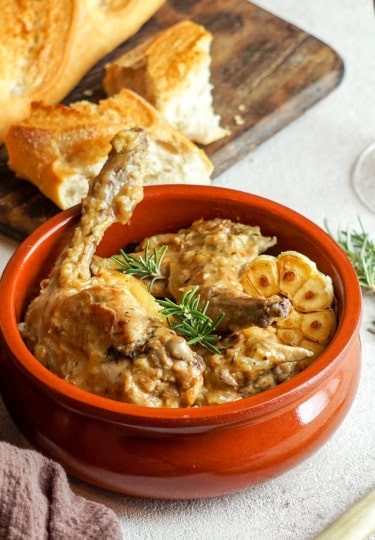Food in the Canary Islands includes fantastic seasonal produce and tried-and-true recipes that have been passed down for generations, from soups and stews to spicy dips and hearty potato dishes.
This Spanish archipelago, including Tenerife, Lanzarote, and Gran Canaria, has forged its own culinary identity built on the native Guanches culture that also takes influences from Spain and North Africa. Typical Canary Islands cuisine is lesser known than other Spanish regional cuisines, which makes it all the more exciting to discover on vacation.
From tantalizing lightly-battered fish to regional cheeses, these are the culinary delights to expect in the Canary Islands.
Papas Arrugadas
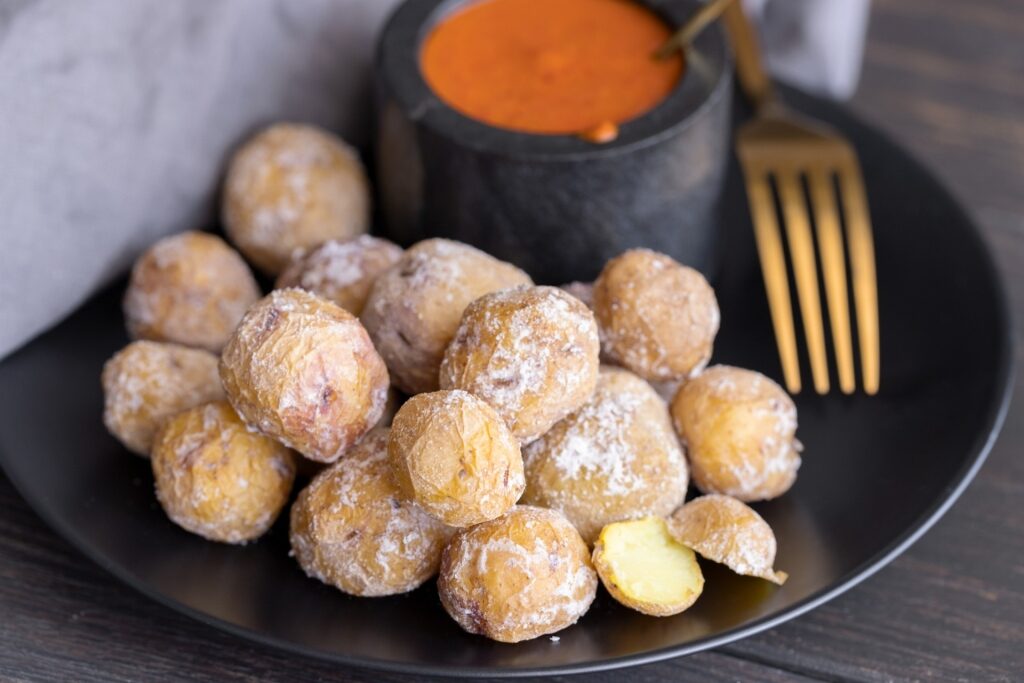
Papas arrugadas
One of the best-known foods in the Canary Islands is papas arrugadas, which translates as “wrinkled potatoes”. This savory dish features boiled new potatoes with their skins left on, which turn crinkly when cooked, and served whole.
Historically, papas arrugadas were boiled in seawater to give them a saltier edge. Today, regular tap water is used, with a generous pinch of sea salt. This lip-smacking dish is made even more mouthwatering with lashings of sauce, including a chili-pepper garlic sauce known as mojo rojo.
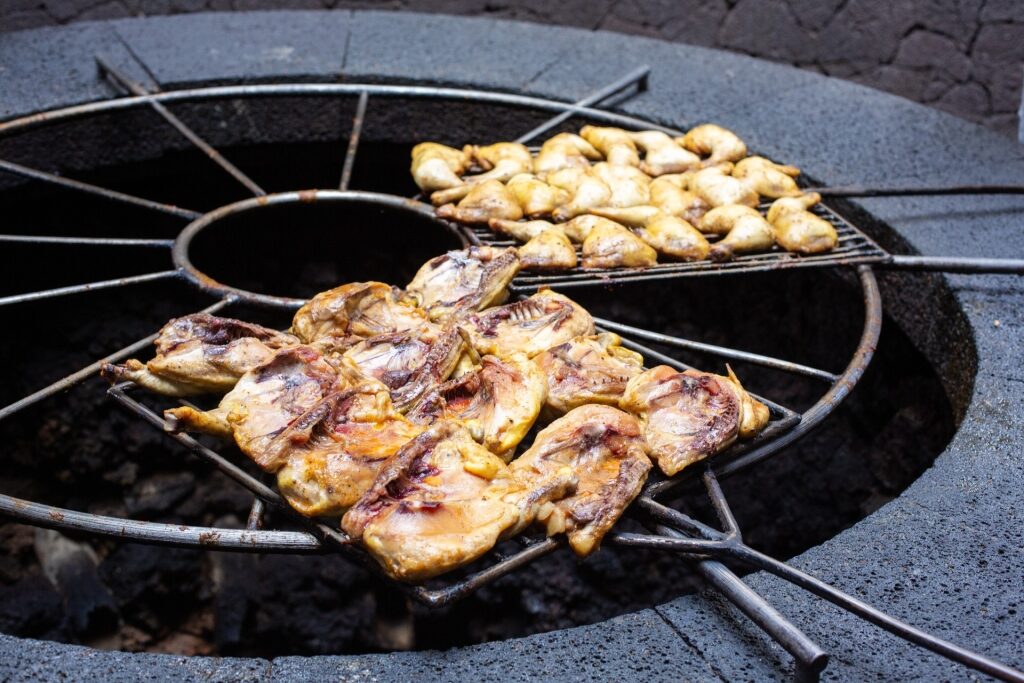
El Diablo, Lanzarote
You’ll find this signature dish available all over the Canary Islands, including at El Diablo restaurant in Lanzarote’s lunar-like Timanfaya National Park. Order it with the restaurant’s showpiece—chicken and pork cooked using the park’s geothermal heat.
Read: Best Things to Do in Lanzarote
Gofio
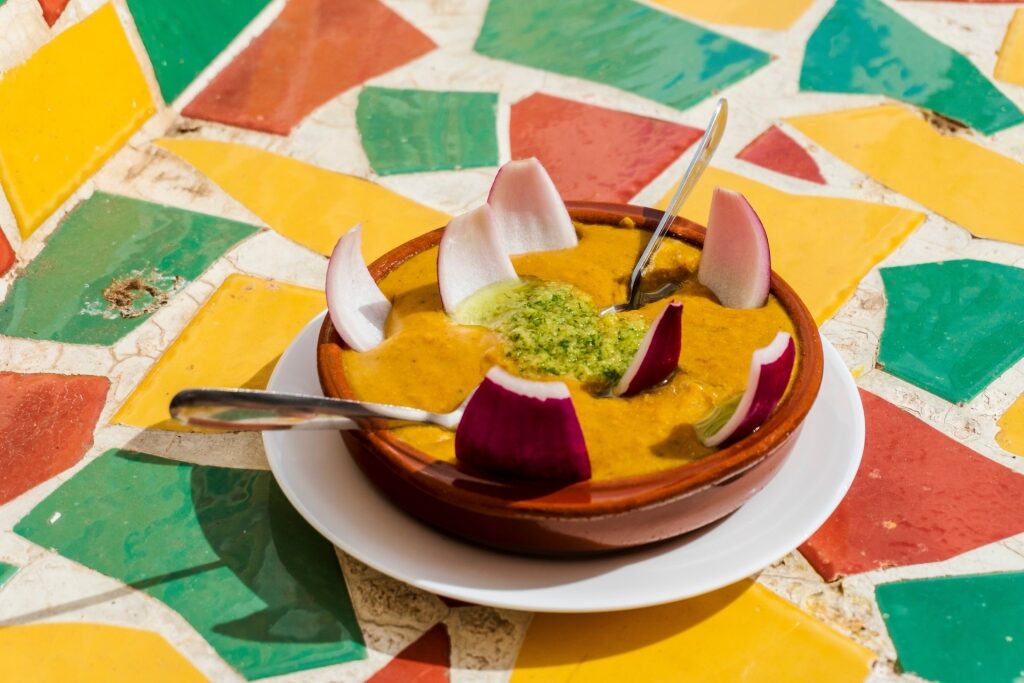
Gofio
This versatile, beige-colored food is a type of finely-ground Canarian flour that’s made by toasting grains, such as corn, wheat, maize, or lentils. Traditionally gofio was combined with water, salt, and honey, and hand-rolled into small balls.
Today, there are many ways to incorporate gofio into dishes. It is sometimes used as the staple ingredient in Canary Islands cuisines such as soup, stews, and dips. It can be mixed with fish broth to create a dish called escaldón de gofio that has a thick texture similar to hummus. It’s combined with almonds and honey to create a sweet, nutty snack; and eaten with milk at breakfast. It’s also used as an ingredient in ice creams and other desserts.
A carbohydrate and protein-rich food, gofio can be traced back to the Guanches people, the Canary Islands’ original inhabitants. In Gran Canaria, you can see how gofio is produced at the island’s oldest mill in the pretty town of Firgas. Firgas’s watermill, Molino del Conde, dates back to 1517 and is now a museum demonstrating how the flour was ground.
Mojo
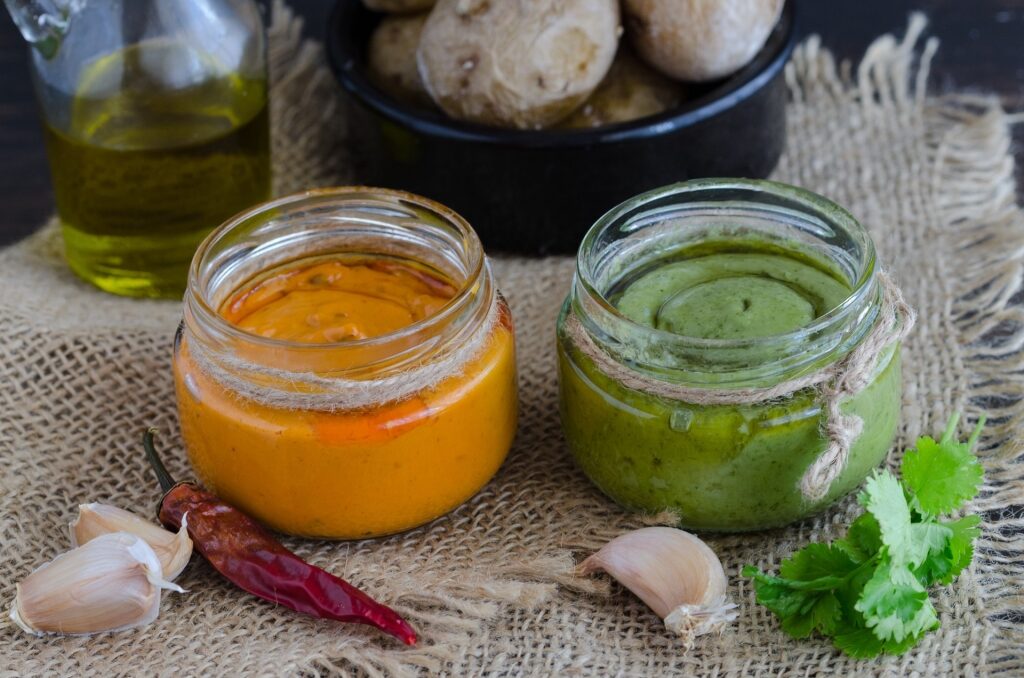
Mojo
Perhaps most synonymous with Canary Islands cuisine is mojo, a piquant sauce that’s liberally applied to cooked potatoes and other dishes.
A vibrant, reddish relish, mojo is made with olive oil, bell peppers, garlic, paprika, and spices such as cumin or coriander. There are three varieties of mojo, mojo verde, made with green peppers; mojo rojo, made with red peppers; and mojo picón, made with spicy red peppers.
At Bodegas Monje, a winery and vineyard in El Sauzal, northeast Tenerife, you could join a hands-on workshop to learn how to prepare mojo picón and Canarian potatoes. Soak up this punchy sauce with thick slices of bread, and savor a glass of the winery’s fruity, white Drago Blanco.
Garbanzada
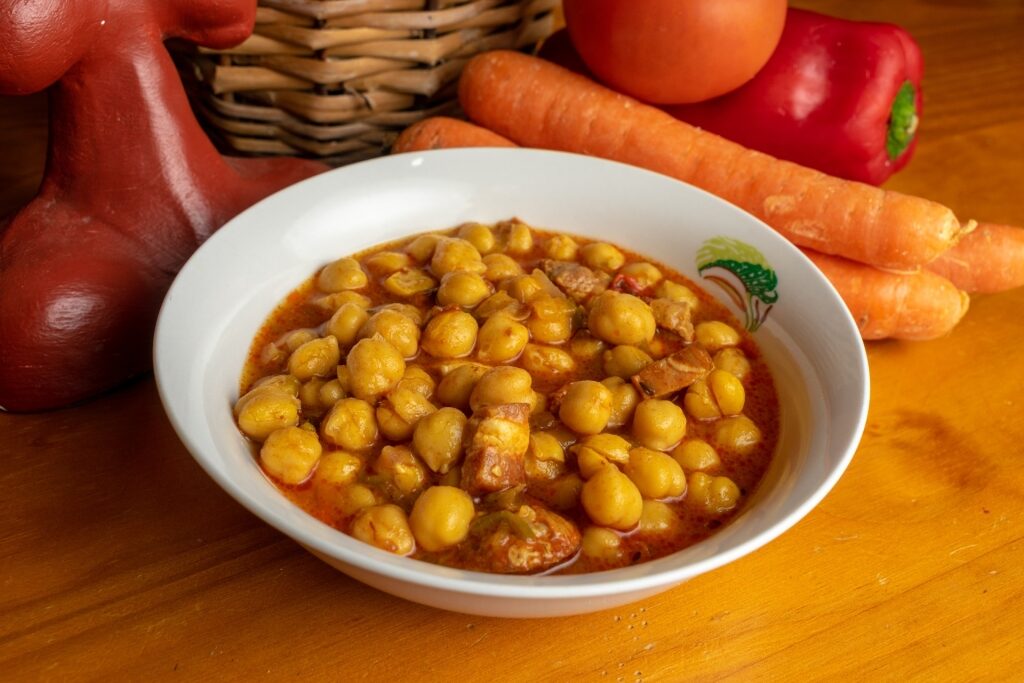
Garbanzada
This customary Canary Islands cuisine is a warming stew of garbanzo beans, pork ribs, pancetta, and chorizo. Often served as an appetizer or as part of a selection of tapas, slow-cooked shredded or diced meat is added to a base of garlic, bell peppers, onions, and tomatoes, with white wine and bay leaves added to the sizzling stew.
Ingredients such as paprika, ground cumin, and saffron are also added to amp up the complexity of flavors. The exact recipe varies between households and restaurants, but one thing is certain—garbanzada is a delicious meal that’s perfect for sharing with friends and family.
Caldo de Pescado
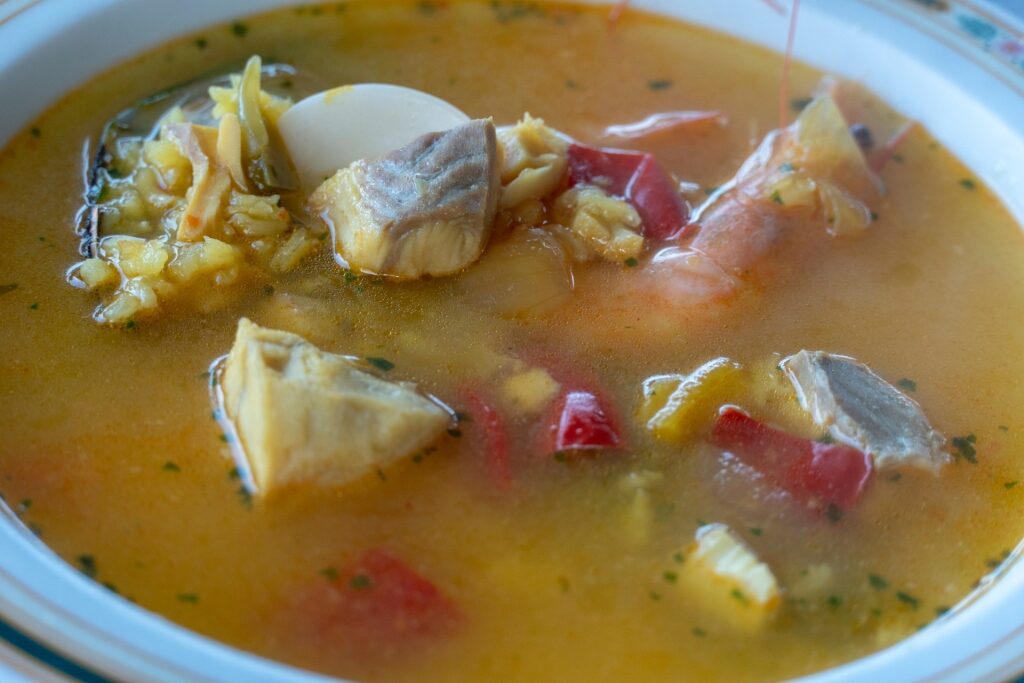
Caldo de pescado
Food in the Canary Islands you might encounter on vacation includes caldo de pescado, or fish broth, with nourishing soups as much a part of this region’s food culture as hearty stews.
This soothing recipe includes fish, potatoes, red or green bell peppers, onions, tomatoes, garlic, and white wine. Types of fish used include sea bass, sea bream, grouper, and snapper, with an array of herbs and spices added, including cumin, paprika, saffron, coriander, mint, and black pepper.
You’re more likely to encounter caldo de pescado during fall and winter in the Canary Islands, when temperatures are still pleasant, but cooler than summer. This aromatic dish makes for a surprisingly filling lunch, served with slices of buttered bread and a glass of local Canarian white wine.
Queso Asado Con Mojo
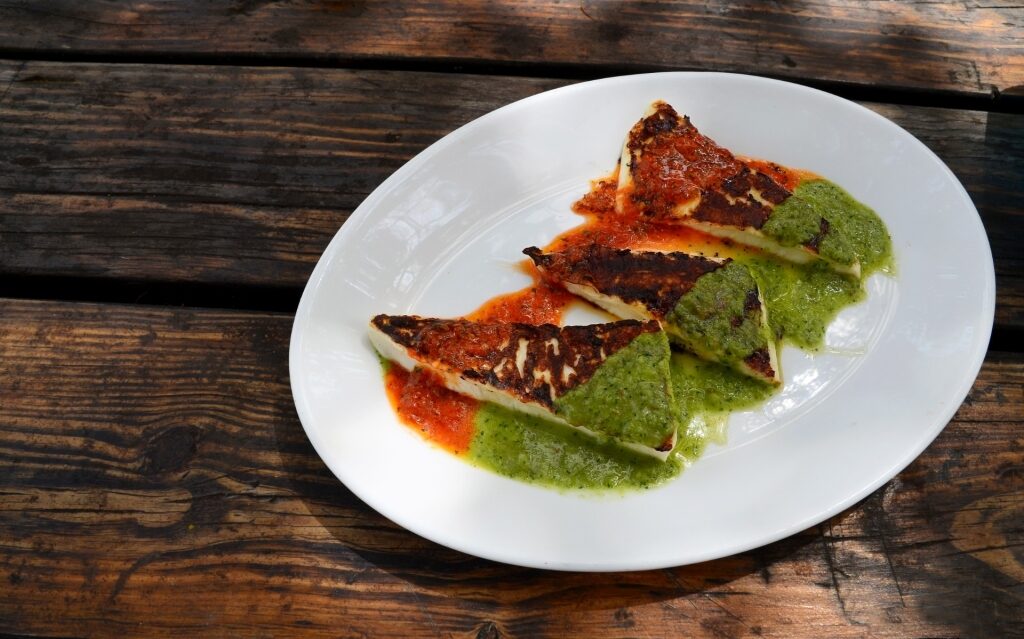
Queso asado con mojo
Few comfort foods are as satisfying as grilled or pan-fried cheese. The Canary Islands version is a local smoked goat or sheep’s cheese, balanced with a generous drizzle of mojo sauce. Queso asado con mojo works as a pleasing snack, a light lunch, or as part of a selection of tapas with evening drinks.
This typical Canary Islands cuisine is served with the cheese cut into thick rectangular slices, fried in extra virgin olive oil, thus giving the cheese a gooey inside texture and golden exterior. There are variations of this recipe that sees the cheese baked, though it’s mostly cooked in a pan. It’s also sublime served with a trickle of honey or a local fig chutney.
Order queso asado con mojo at a Canary Islands’ guachinche, a rustic restaurant serving local wine and traditional dishes. These pared-back establishments are typically found in wine-growing regions of Tenerife, including in El Sauzal, Tegueste, and La Orotava.
Conejo al Salmorejo
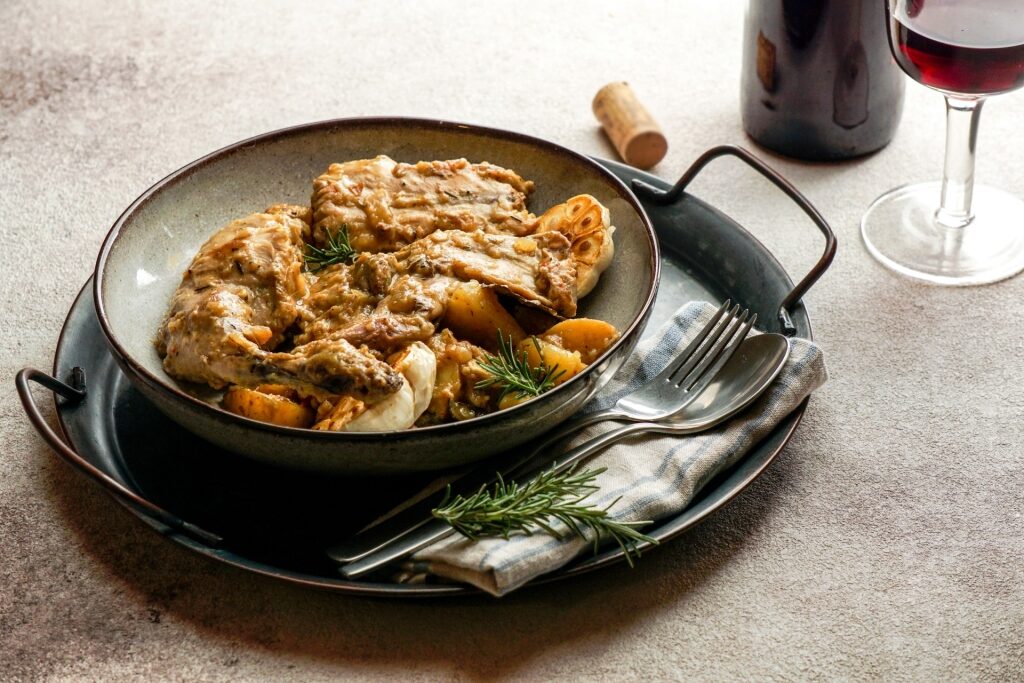
Conejo al salmorejo
This succulent rabbit dish sees the white meat browned in a pan before being cooked in a decadent marinade, with the rabbit’s liver sometimes added for extra flavor.
The marinade features a blend of white wine, red wine vinegar, olive oil, garlic, bay leaf, bell peppers, thyme, oregano, cumin, and sweet paprika. Quite often, the rabbit is marinated overnight, bolstering the rich and aromatic tastiness of the meat.
Conejo en salmorejo is a dish that pairs well with bread, papas arrugadas, and rice, and is typically served family style, as a sharing dish.
Canary Islands Cheese
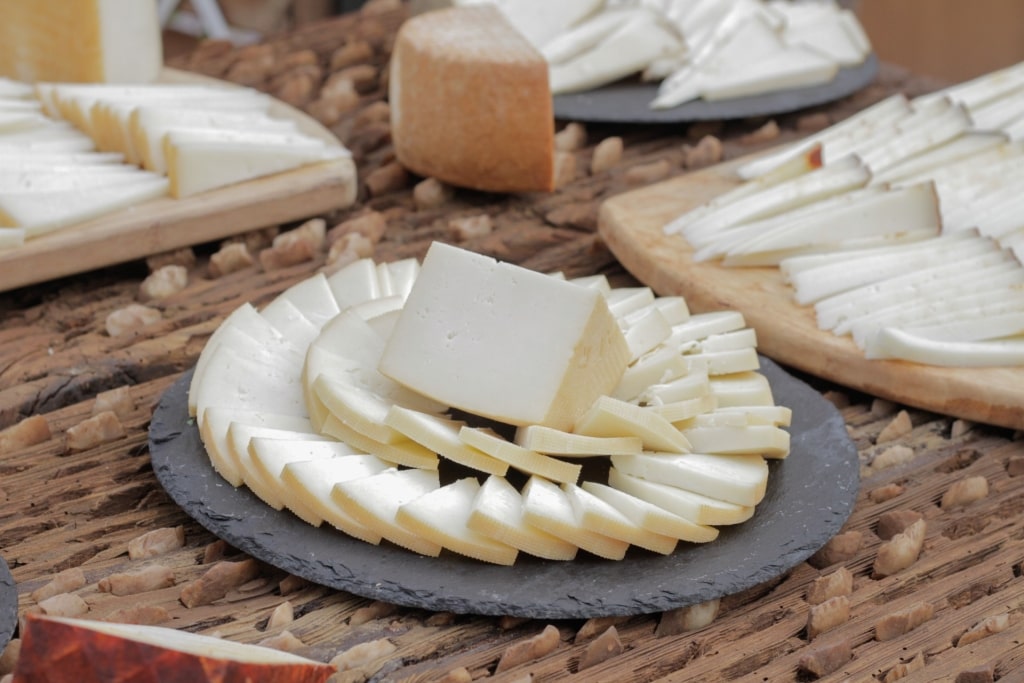
Cheese
Canary Islands cuisine features a wonderful selection of island-made cheeses, with varieties reflecting the different regions. It’s thought that cheesemaking began in the Canary Islands after the arrival of Europeans, in the 16th century, though there is no concrete proof as to its origins.
Canary Islands cheeses include ones cloaked in paprika, fig leaf, and gofio. Some are smoked, others are mild and creamy. Three Canary Islands cheeses have the prestigious protected designations of origin status. Queso Majorero is similar in taste and texture to Manchego; Flor de Guía is unique because it’s made using Canarian sheep’s milk, with a small amount of cow’s and goat’s milk; while Queso Palmero is an unpasteurized goat’s cheese.
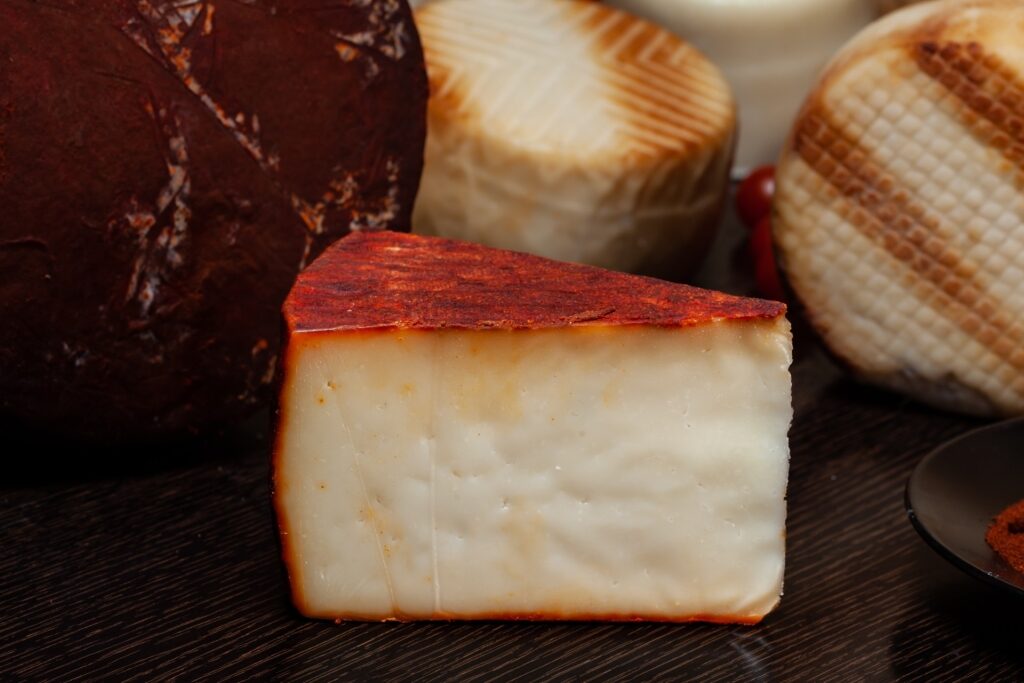
Cheese
Try Gran Canaria’s mild and creamy Flor de Guía, produced in the northern regions of Santa María de Guía, Gáldar, and Moya. Lanzarote has a tasty selection of artisan cheeses, including Queseria Montaña Blanca, which operates a small cheese factory and shop in the village of San Bartolomé.
Set amid the hills of Adeje in the south of Tenerife, cheese lovers could visit Quesería Montesdeoca, an award-winning cheese factory offering tours and tastings.
Ropa Vieja Canaria
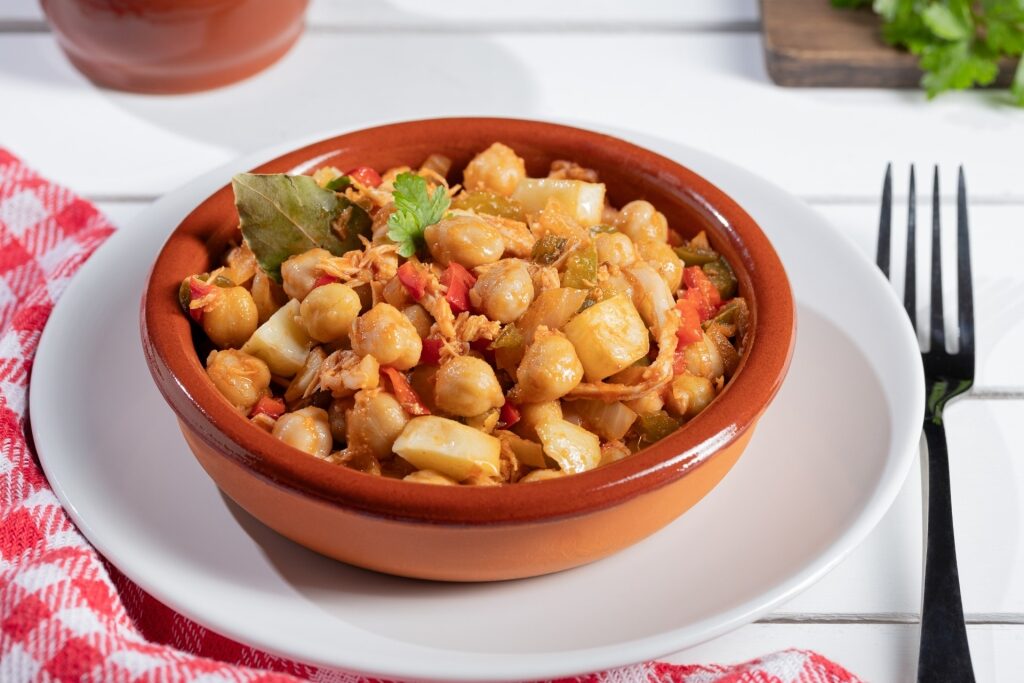
Ropa vieja Canaria
This homespun Canary Islands stew consists of shredded beef and chicken, garbanzo beans, potatoes, and tomatoes.
Like many one-pot dishes in the Canary Islands, the exact ingredients vary, though often ropa vieja Canaria includes onions, red bell peppers, paprika, garlic, white wine, chicken stock, cloves, bay leaves, salt, and black peppers.
The meat is covered with water, simmered in a pan until cooked, before being drained and then shredded. The garbanzos are added; once they have turned crispy, the rest of the ingredients are sauteed, then simmered.
With its thick chunks of potato and delicate slithers of meat, Ropa Vieja Canaria is best enjoyed on its own, accompanied by a chilled glass of Canarian white wine.
Sancocho Canario
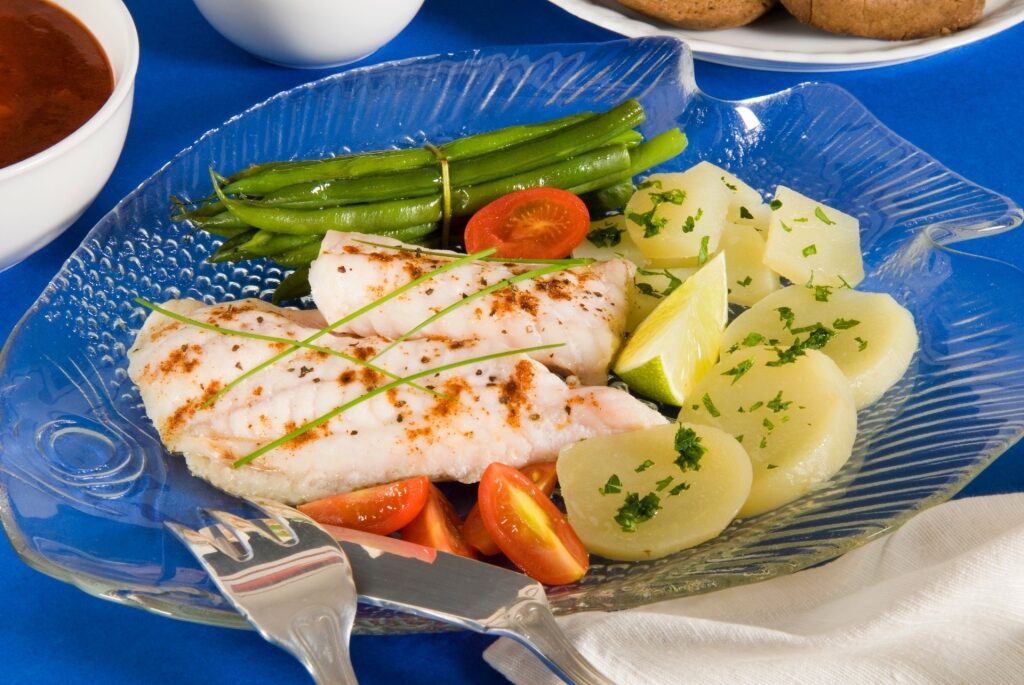
Sancocho Canario
This salted white-fish dish uses sea bass, grouper, wreckfish, or conger eel and is traditionally eaten in homes on Good Friday at the beginning of the Easter weekend. While it’s consumed across the Canary Islands, it’s more common in coastal towns and traditional fishing villages.
The fish is first preserved by salting. When the fish is ready to eat, it’s soaked, and the salt is removed. Chopped potatoes and sometimes sweet potatoes, parsley, and salt are combined and all of the ingredients are parboiled together, including the fish.
The water is then drained and the dish is served—often with gofio and a healthy dollop of mojo sauces.
Bienmesabe
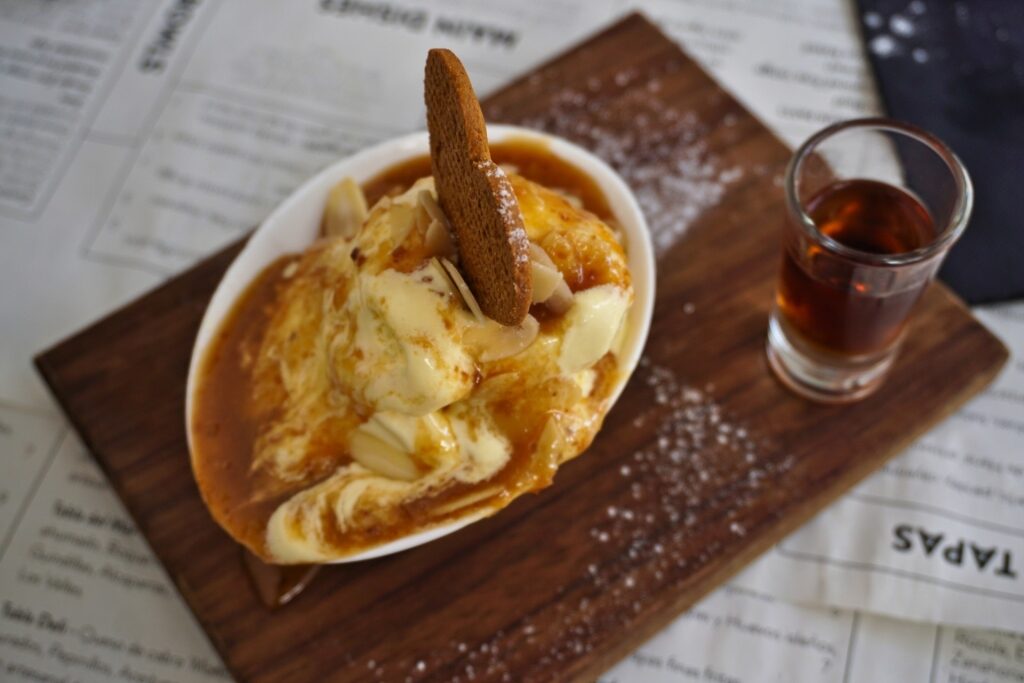
Bienmesabe
“It tastes good to me” is the English translation of this sweet Spanish dessert that’s wildly popular in the Canary Islands. Made by combining honey, sugar, egg yolk, and ground almonds, bienmesabe originates in Andalusia, where the dish has more of a spongy texture.
In the Canary Islands, lemon zest and cinnamon powder are added to bienmesabe, with the dish having a thick, grainy texture, owing to its almond base. It’s delicious served cold, accompanied by a cookie, a scoop of ice cream, or a coffee on the side.
Puchero Canario
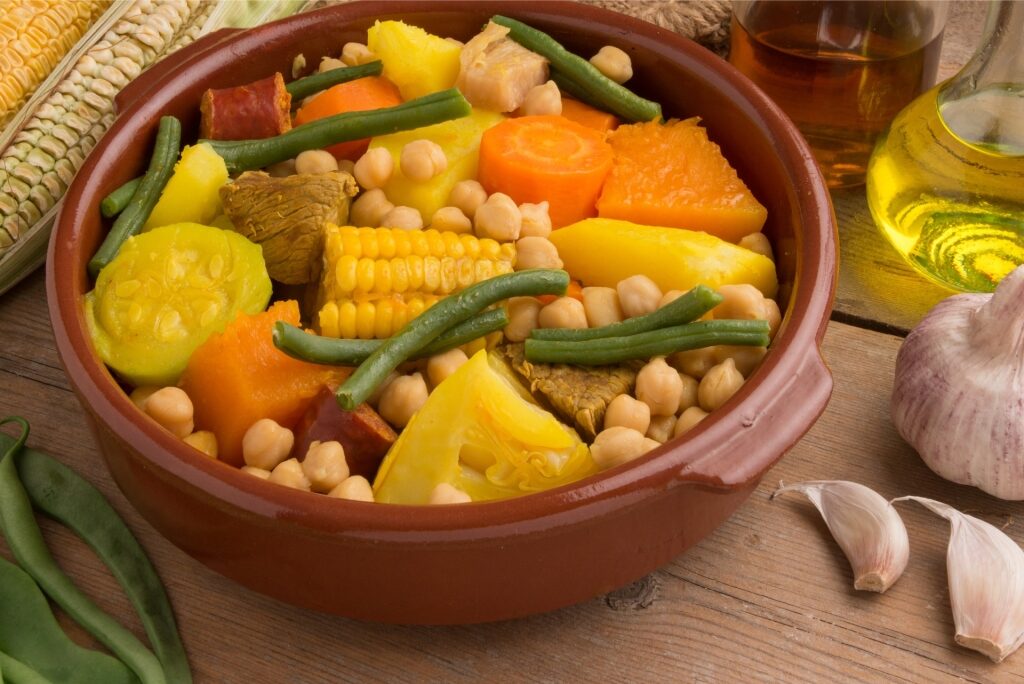
Puchero Canario
This lip-smacking Canary Islands comfort food is a humble meat stew that’s jam-packed with nutritious vegetables. Puchero Canario consists of chicken, beef, streaky bacon, chorizo, garbanzos, and a whole range of vegetables, including pumpkin and sweet potato.
Puchero Canario is a popular dish for its healthy dose of vegetables and earthy taste. Paprika, saffron, and black pepper are added to the mixture, giving the dish more of a robust flavor. Naturally, the quantities and ingredients are adjusted from place to place.
Churros de Pescado
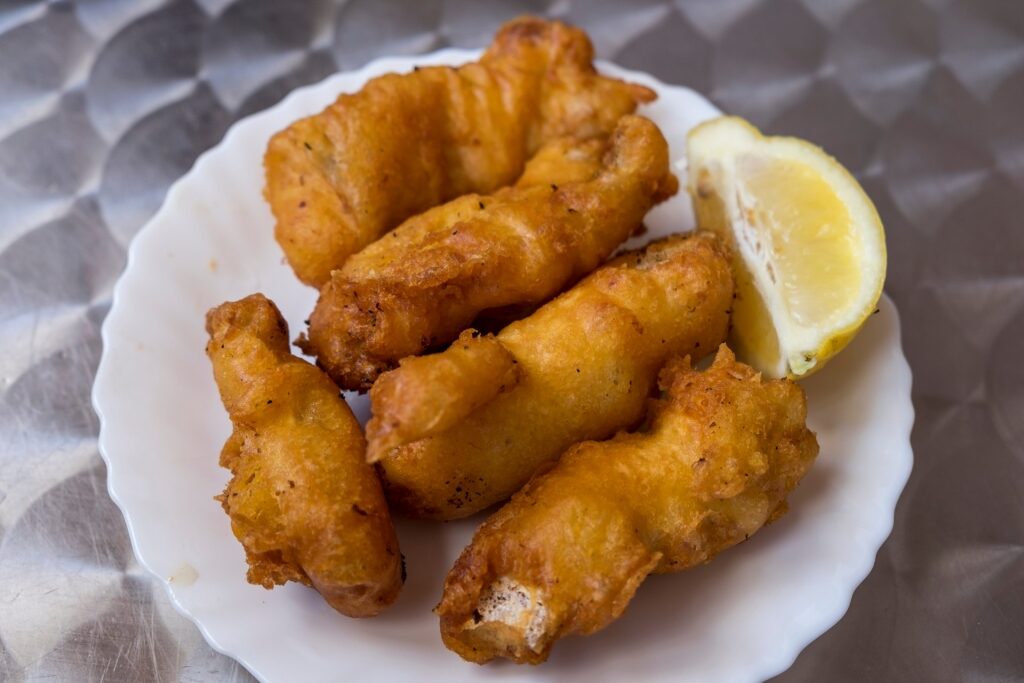
Churros de pescado
Fried fish fingers are not just a popular item on a children’s menu. In the Canary Islands, they’re given a gourmet twist, jazzed up with white fish filets marinated in lemon, garlic, and parsley.
The fish—often grouper—is then coated in a delicious beer batter that’s flavored with garlic, saffron, and herbs. Crispy churros de pescado are often served with salad, fries, and garlic mayonnaise.
Sample churros de pescado at Tasca El Olivo, near the black-sand beaches of Puerto de la Cruz in Tenerife, or at La Tapita, a small restaurant in Playa Blanca, Lanzarote.
Rancho Canario
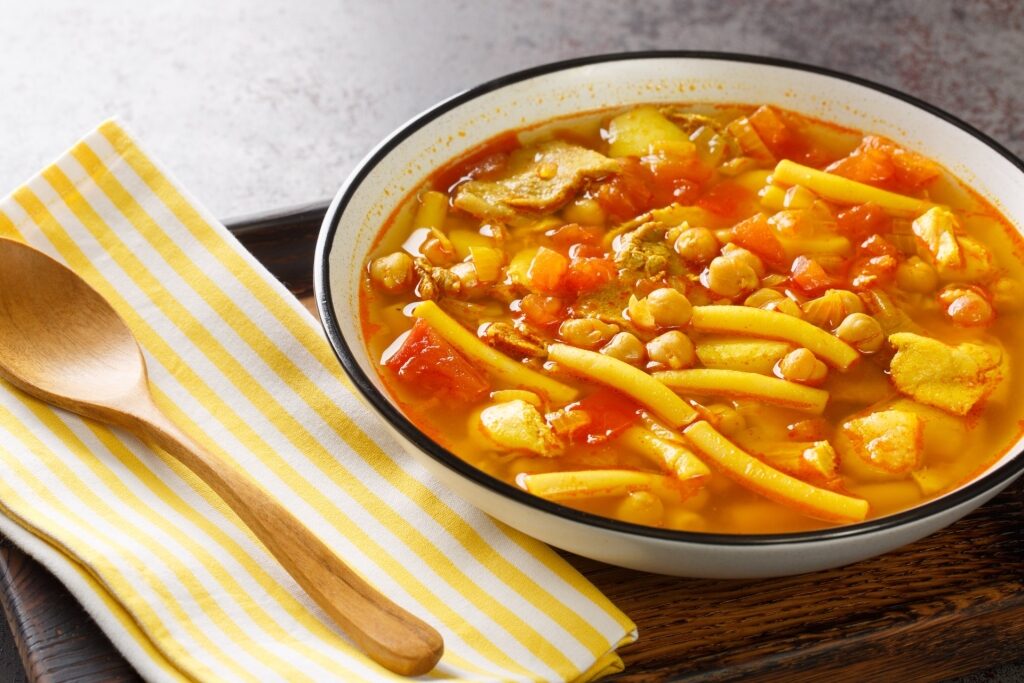
Rancho Canario
This hearty soup-stew hybrid is a pantry-raiding dish that’s adored for its warm flavors. This staple meal features garbanzo beans, pork, chorizo, potatoes, noodles, onion, tomatoes, garlic, sweet paprika, saffron, and salt.
Different regions of the Canary Islands adjust the ingredients. For example, beans replace garbanzos in Gran Canaria. Rancho Canario tends to have a thick consistency and is a perfect lunchtime meal or as an appetizer served in the evening.
Carne de Cabra
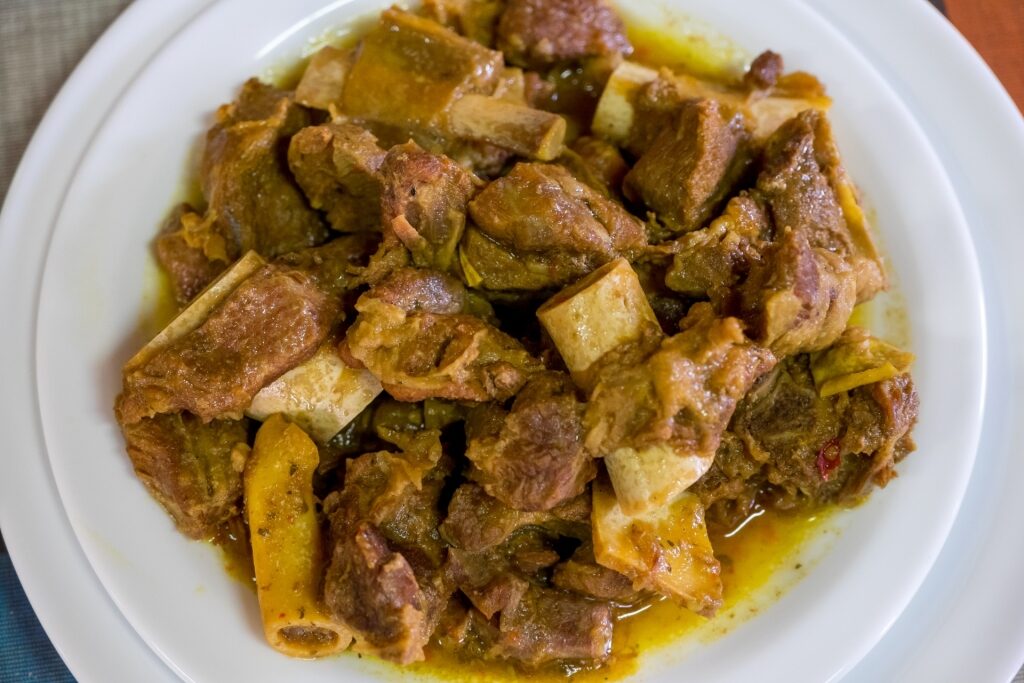
Carne de Cabra
Goat is a popular choice of meat in the Canary Islands, and this classic stew utilizes the tenderized meat, cooked with onions, red bell peppers, red or white wine, bay leaves, paprika, thyme, clover, and cumin.
Carne de Cabra is prepared by first seasoning the meat. Onions are sauteed with the meat until golden, before the rest of the ingredients are added to the same pan.
After 15 minutes of cooking, water is added and the dish is left to cook on medium heat for a further hour. By browning the meat, then slowly cooking it with the other ingredients, the flavor is amplified, then locked in.
Carne de Cabra is served with wrinkled potatoes or thick slices of bread to mop up the juicy goodness of this Canary Islands dish.
Olive Oil
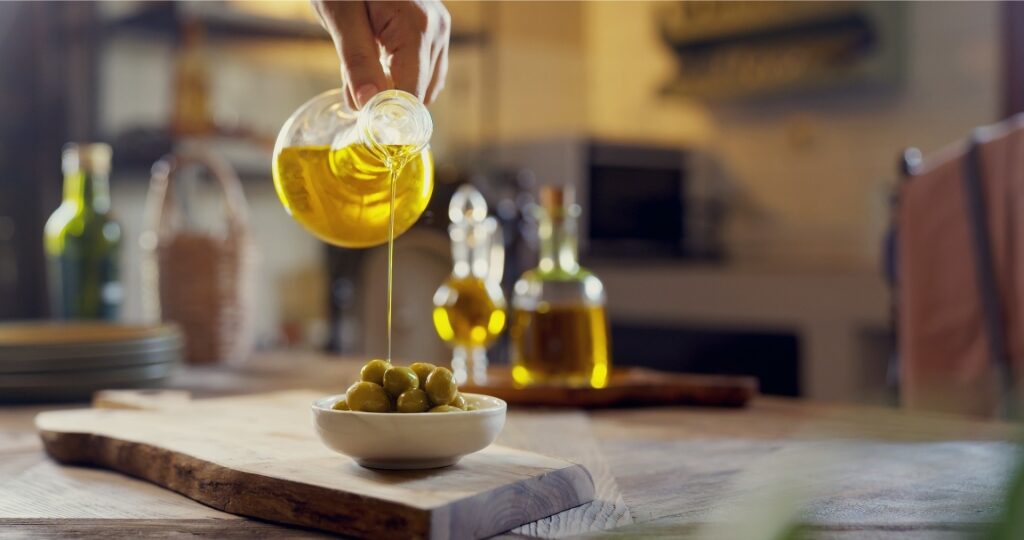
Olive oil
Most food in the Canary Islands is incomplete without at least a drizzle of olive oil, added either during the cooking process or to add extra flavor to the finished dish. Olive oil is produced across the Canary Islands and makes for a wonderful souvenir to take home.
In Gran Canaria, among the cactus, palm, and pine-fringed terraces in the small hamlet of Temisas near Agüimes, there is an abundance of olive groves that produce the region’s notable Caserío de Temisas Extra Virgin Olive Oil. Temisas is a delightful mountainside spot to wander around, with traditional sugar-white houses and a 16th-century olive mill—the oldest olive press in the Canary Islands.
Read: Things to Do in the Canary Islands
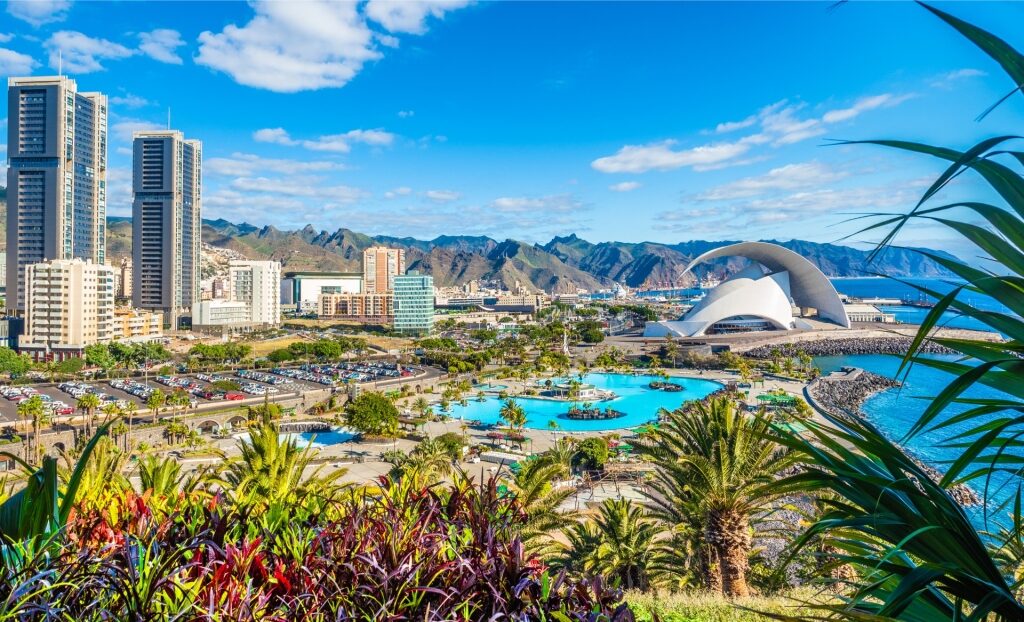
Tenerife
Savor authentic regional cuisine on one of Celebrity’s cruises to the Canary Islands, where you could explore Tenerife, Lanzarote, and Gran Canaria.
